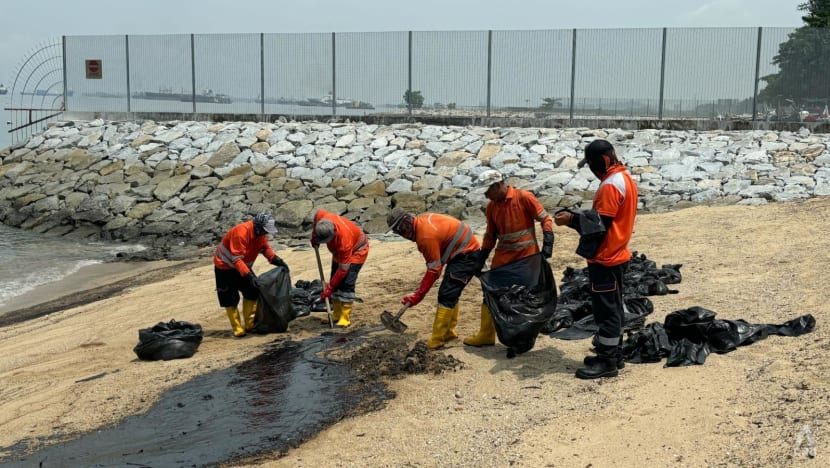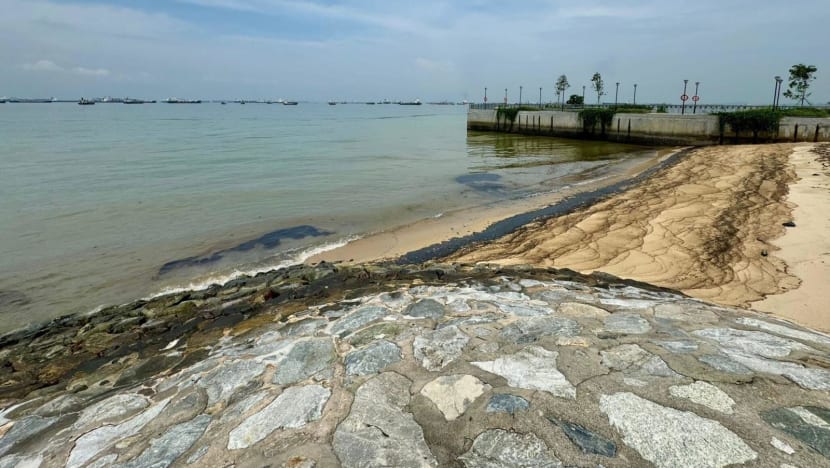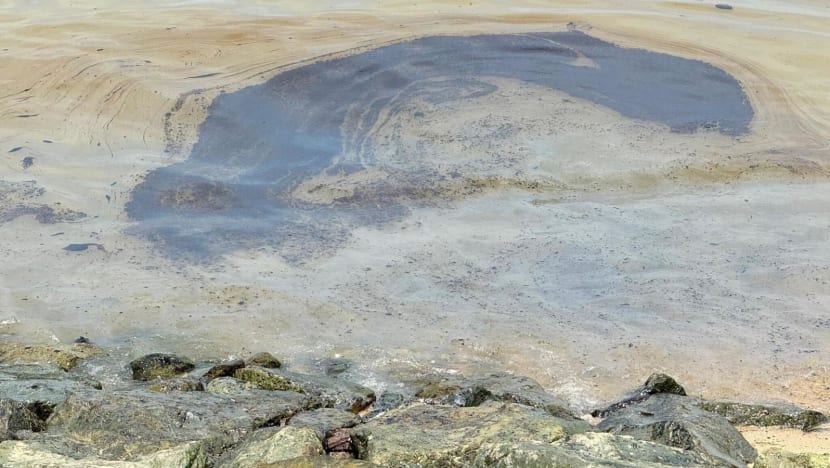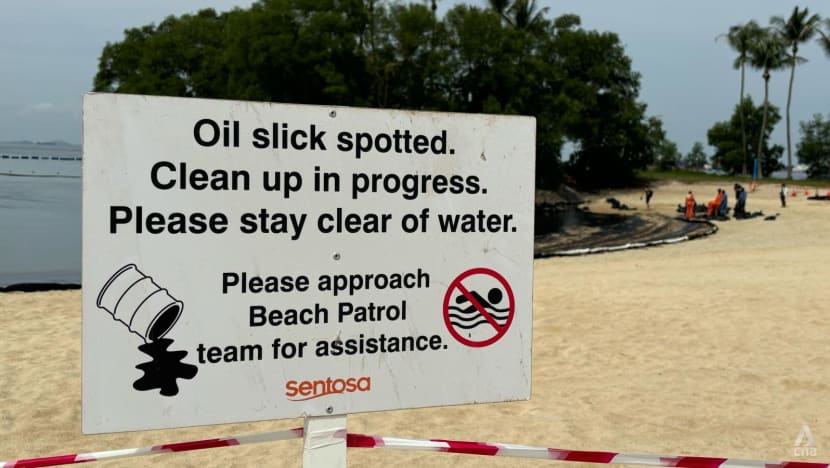Local fish remain safe to eat, 'low risk' of oil spill spreading to farms: SFA
To date, none of the country’s fish farms in the Johor Straits have been affected by the oil spill, says the Singapore Food Agency.

File photo of a stall selling fish at a wet market in Singapore. (Photo: Calvin Oh)

This audio is generated by an AI tool.
SINGAPORE: There is "low risk" of the recent oil spill spreading to local fish farms in the Johor Strait, the Singapore Food Agency (SFA) said on Sunday (Jun 16).
The oil spill began after dredger Vox Maxima hit stationary bunker vessel Marine Honour at Pasir Panjang Terminal at about 2.20pm on Friday, resulting in some oil from a damaged cargo tank spilling into the water.
In a Facebook post on Sunday evening, SFA said that local fish "remain safe for consumption".
"As agencies work hard to clean up the oil spill, we would like to assure the public that there is low risk of the oil spill spreading to the Johor Straits, where our local fish farms are located."
The oil spill has since spread to several coastlines, with beaches at St John's, Lazarus and Kusu islands closed on top of areas B to H of East Coast Park, as well as the jetty and rocky shore of Labrador Nature Reserve.
Sentosa's beaches remain open to the public, but sea activities and swimming are still not allowed at Tanjong, Palawan and Siloso beaches.
SFA said that to date, none of Singapore's fish farms are affected by the oil spill.
"We are in close contact with our farms and will continue to monitor the situation closely," added the agency.





IMPACT ON MARINE LIFE
The Sentosa Development Corporation (SDC) said on Saturday that apart from cleaning up the beaches, it is also focusing on minimising the impact on its waters and surrounding wildlife.
Local conservation group Marine Stewards told CNA that the affected marine wildlife appeared to be mainly around the Southern Islands, although it remains too early to see the full extent of the damage.
According to Marine Stewards founder Sue Ye, the group is aware of one kingfisher that has been rescued from Marina at Keppel Bay. Another kingfisher was seen covered in oil at Lazarus Island.
"We have also seen photos of dead fish, and otters covered in oil," she said.
The non-governmental organisation is helping to facilitate the rescue and rehabilitation of any affected marine wildlife together with Friends of Marine Park. ACRES is also ready to assist, said Ms Ye.
"It is still too early to see the full extent of the damage as different animals may be affected in different ways," she added.
"We do not know if all of the oil is getting adequately cleaned up, or how long that will take, as the oil spill covers a large area between Pasir Panjang all the way to East Coast Park. Cleaning up the oil may involve the introduction of even more chemicals into the water that could affect marine life."
Singapore authorities said in an earlier statement that the oil spill from the vessel had been contained and there had been no further leak from the ship since Friday evening.
Close to 1,500m of containment booms have been deployed since Friday at various locations, including the three beaches at Sentosa, the entrance of Keppel Marina, off Labrador Nature Reserve, East Coast Park and West Coast Park.
Another 1,600m of booms will be laid over the next few days to prevent the further spread of oil onto the shore.
The Maritime and Port Authority (MPA) is working with British Marine, the insurer of the stationary tanker, to set up a contact for third-party claims by "affected parties who have been impacted".















